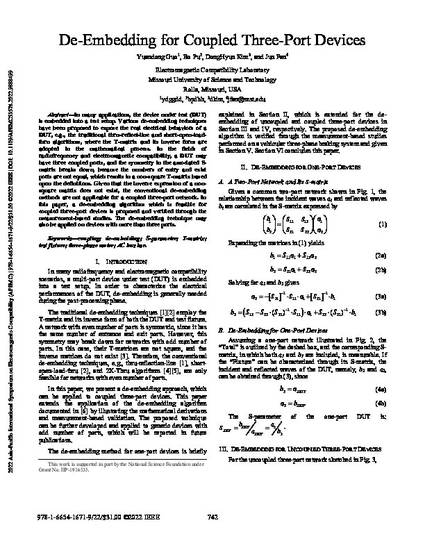
In many applications, the device under test (DUT) is embedded into a test setup. Various de-embedding techniques have been proposed to expose the real electrical behaviors of a DUT, e.g., the traditional thru-reflect-line and short-open-load-thru algorithms, where the T-matrix and its inverse form are adopted in the mathematical process. In the fields of radiofrequency and electromagnetic compatibility, a DUT may have three coupled ports, and the symmetry in the associated S-matrix breaks down, because the numbers of entry and exist ports are not equal, which results in a non-square T-matrix based upon the definitions. Given that the inverse expression of a non-square matrix does not exist, the conventional de-embedding methods are not applicable for a coupled three-port network. In this paper, a de-embedding algorithm which is feasible for coupled three-port devices is proposed and verified through the measurement-based studies. The de-embedding technique may also be applied on devices with more than three ports.
- AC bus bar,
- coupling,
- de-embedding,
- S-parameter,
- T-matrix,
- test fixture,
- three-phase motor
Available at: http://works.bepress.com/jun-fan/409/

National Science Foundation, Grant IIP-1916535